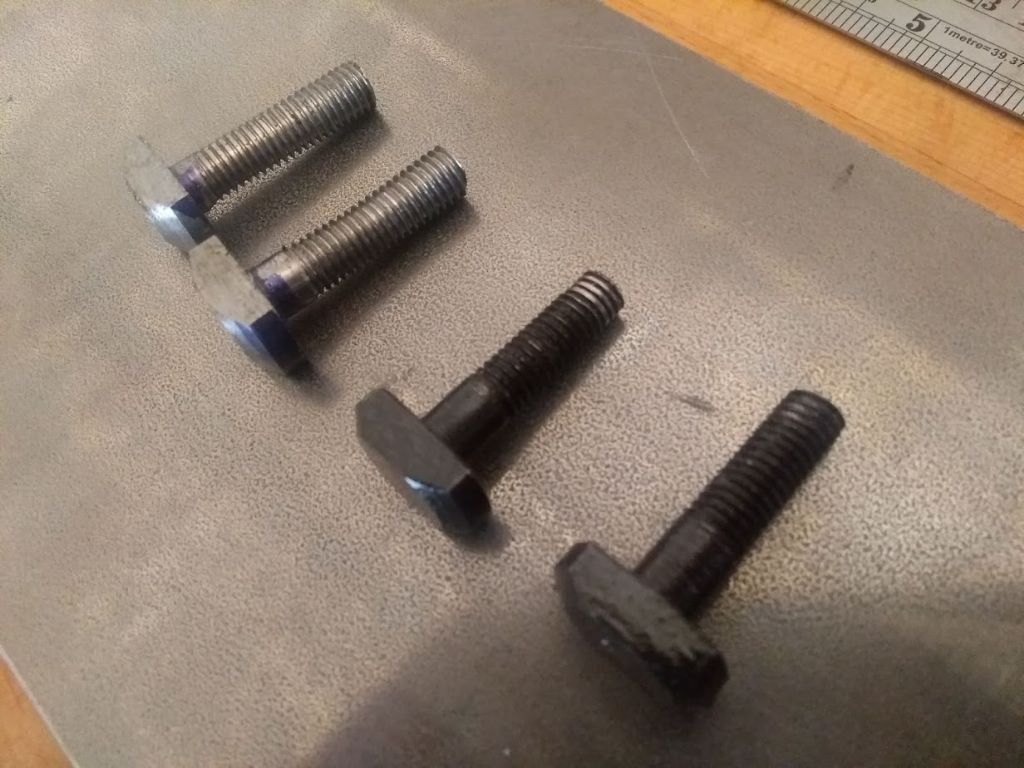Posted by Calum Galleitch 10/04/2022 17:22:06
I'd like to have a go at making gears to make up the missing changewheels that
I have – I think I'll do a separate thread about them as it may be of more general
interest but I'm just trying to understand the gear train of my lathe:
Beginning with the spindle, wheels 13,17,16,18, 19 and 20 have 45, 45, 45, 68, 17
and 45 teeth, so for one turn of the spindle A will be turned 45/68*17/45 times = 1/4
which is what John P wrote last year…so far so good!
Q. Where/how is the reverse in this diagram? Physically on the lathe it's somewhere
round the wheels labelled 17-18 but unless the reverse mechanism is not drawn
I don't see how it works.
In the quickchange box, 21/22/23 mesh with 29/30/31, giving ratios of
20/40, 40/20, 30/30 which corresponds with the 1/2/3 knob. Like wise the
second knob, 24/25/26 mesh with 32/33/34 giving 20/40, 42/24, 36/24 (1/2, 7/4,3/2).
Finally, if the leadscrew is selected the drive is fed through wheels 36 to 28,
which are 45/21.
Q. Am I right in thinking the manual states it is a 4mm pitch leadscrew?
Slightly alarmingly it gives "module no. or pitch" as '4 or 1/6" '. Now 4mm is
close to 1/6" but it's not that close!
Putting all this together, If I choose to cut a 4mm thread,
I take A,B,C,D=36,27,28,30 teeth from the front chart and
select 2,II (30/30, 36/24). One spindle revolution then gives:
1/4 * 36/27 * 28/30 * 30/30 * 36/24 * 45/21 = 1 turn of the
leadscrew, so if it is a 4mm leadscrew we've got a 4mm pitch. Phew.
When the feed is selected, the 45/21 drops out and the feed rod turns.
Q. What is happening at 44/45? Clearly this is where torque is being taken
off the feed. Then (assuming carriage feed engaged) 48 drives 46 which
drives the wheel engaging the rack? But what are 50/51/52 doing?
Similar for the cross-feed I assume 47 engages 48, in turn driving 49.
I'll add the manual pages for the gear list to my lathe album should anyone
feel inclined to try and make sense of it!
—————————————————————————————-
Hi Calum
The gear chart is depicted as a diagram and as such lacks the detail
needed,the reverse feed is the 16 and 17 cluster gear ,in reality
the gear 13 directly meshes with gear 18 ,i think the gear 18 slides along
a spline and sits in the gap between gear 16 and 17 for neutral
and connects to gear 13 via 17 and 16 to 18 to reverse the rotation.
It is some while since i have had the lid off so this is from memory.
Gear 44 is a worm that engages with the slot on the feedscrew that drives
wormwheel 45 and is the input drive to the apron.
The auto feed clutch dog either drives the apron along the bed through
gear 50 to 51 ,51 is connected to gear 43 which drives along the rack
57 under the bedway.
When the auto feed clutch is in the other position (it is quite poorly drawn)
gear 48 drives gear 47 through gear 46 to gear 48 which is part of the
crosslide leadscrew.
There may be some differences from the 750 machine that you have and the
GH 1000 i have as if you look at the photo's the handwheels are in different
positions ,this may not affect the operation but the gears may not be the same.
John
Edited By John P on 10/04/2022 22:50:03
Edited By John P on 10/04/2022 22:52:48
Calum.


















